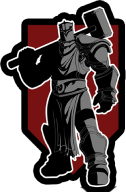3DArt production
Polydin Studio is a top-tier provider of 3D art services catering to a diverse range of gaming and interactive projects, including NFT ventures, Metaverses, and Ecommerce. We specialize in creating high-quality 3D characters, environments, props, etc. that are visually stunning and engaging for audience of every kind.
We are dedicated to delivering consistent quality and efficiency throughout the production process, relying on our proven industry-standard pipelines and battle-tested methods. Our team of talented artists and designers work closely with clients to comprehend and apply their vision and deliver customized 3D art that meets their specific needs and exceeds their expectations.
With our extensive experience and expertise, we are pleased to offer a range of 3D services tailored to your project needs. Our comprehensive 3D art production services include everything from initial sketching to texturing and shading, ensuring AAA quality results at affordable and indie-friendly rates.
Characters are the heart and soul of any story. Designing compelling characters is a critical aspect of every creative project, as they are the ones who bring the story to life and leave a lasting impression on the audience. Our team specializes in creating a wide range of character styles, from stylized and cartoonish to highly detailed and photorealistic, starting with initial sketches and refining them to perfection. Our 3D art production services in this area also include:
- Creature design and modeling
- Grooming (Fur and Hair)
- Skins and outfits
Our 3D environment department have exceptional skills in composition, lighting, natural environment, and architectural elements, enabling them to create unique scenery and 3D environments are that are immersive and visually appealing. Whether it's a post-apocalyptic wasteland or a bustling futuristic city, Polydin Studio can create stunning 3D environments that make players feel like they are part of the game world. Our services here include:
- Prop design
- Vehicle design
- Weapon design
- Set dressing
With experience in creating multiple
At Polydin Studio, we are equipped to provide comprehensive support regarding 3D contents for AR/VR apps and ecommerce. Our team of highly skilled professionals is prepared to construct any 3D models required for virtual and augmented reality. We place particular emphasis on understanding the precise needs of each project, fine-tuning our models to perfectly align with our clients' expectations. Our services here includes:
- Clothing and accessories modeling
- Furniture and asset modeling
- Product modeling
character generators for UE Marketplace, we can come up with stylized and realistic character generators with different morphs, faces and clothing.
Flexibility
We have a rich talent pool of artists with experience in AAA industry, So we can scale up for even larger projects.
Advance Skillset
Our 3D character team has a strong knowledge of sculpting, texturing, lighting and modeling workflows and can come up with various styles, from realistic to stylized and cartoonish.
Indie-Friendly Rates
Perfect art should be available for everyone, so we do our best to come up with efficient solutions to keep your costs within your budget.

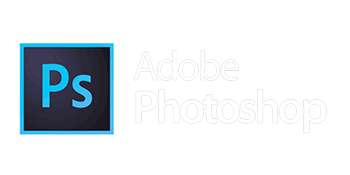
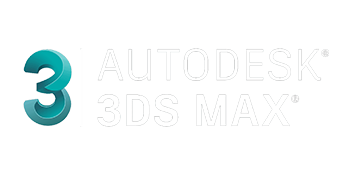




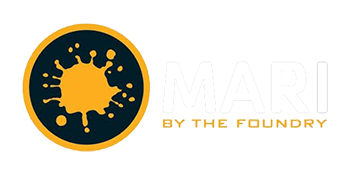


Process of 3D art production
We have complete confidence in our tried-and-tested pipelines that have enabled us to deliver top-notch quality to our clients across numerous 3D art production projects. Our approach involves meticulous attention to detail, and we ensure that our clients are involved in every step of the process, from inception to delivery. Our projects always commence by gathering our client’s requirements and needs, and we utilize all our resources to bring their vision to life with the utmost care and precision.
References and Preparation
Modeling and Texturing
Additional services
Delivery
FAQs
3D art refers to any artistic work or creation that is made using three-dimensional digital modeling techniques. This can include a wide range of styles, such as computer graphics, animation, sculpture, and even virtual reality.
There are several reasons why a company or individual might choose art outsourcing studio to outsource their 3D art production. Some of these reasons include:
Cost savings: Outsourcing 3D art services can often be a more cost-effective solution than hiring an in-house team. Outsourcing allows you to avoid the costs associated with hiring, training, and maintaining a full-time team of 3D artists.
Access to specialized expertise: By outsourcing 3D art services, you can access a wider pool of talent with specialized expertise in areas such as modeling, texturing, and animation. This can be particularly valuable for projects that require a high level of technical skill or specialization.
Scalability: Outsourcing 3D art services allows you to scale your production up or down as needed, without having to worry about the logistics of hiring and firing employees.
Focus on core competencies: By outsourcing non-core activities such as 3D art, companies can focus on their core competencies and devote more resources to areas that are critical to their business.
Faster turnaround times: Outsourcing 3D art services to a specialized provider can often result in faster turnaround times, as these providers have the expertise and resources to complete projects more efficiently.
The principles of 3D in art are the fundamental concepts that guide the creation of three-dimensional artworks. These principles include:
Form: The form refers to the three-dimensional shape and structure of an object. In 3D art, creating convincing form is critical to creating a believable and immersive experience for the viewer.
Space: Space refers to the three-dimensional area in which an object exists. In 3D art, creating a sense of space is essential to creating a believable environment or scene.
Light: Light is crucial in 3D art, as it helps to create depth and volume, and can be used to highlight specific features or elements of an object.
Color: Color can be used to convey mood, emotion, and atmosphere in 3D art. It is important to consider color theory when creating 3D art, as the colors used can have a significant impact on the overall feel of the piece.
Texture: Texture refers to the surface quality of an object, and can be used to create a sense of realism and depth in 3D art.
Proportion: Proportion is important in 3D art, as it helps to create a sense of balance and harmony between different elements in the scene.
Composition: Composition refers to the arrangement of objects and elements in a scene, and is essential to creating a visually appealing and effective piece of 3D art.
By mastering these principles of 3D in art, artists can create compelling and realistic three-dimensional works that capture the imagination and engage the viewer.
While 3D art production offers incredible possibilities for creating realistic and visually stunning assets, it also presents some challenges. Here are a few common challenges faced in 3D modeling:
Complexity and learning curve: 3D modeling software can be complex, and mastering it requires time and effort. Learning the intricacies of the software and understanding the various modeling techniques can be a challenge for beginners.
Technical limitations: 3D modeling software often has technical limitations in terms of polygon count, rendering capabilities, and hardware requirements. Working with high-polygon models or complex scenes can be resource-intensive and may require powerful hardware to ensure smooth workflow and rendering.
Maintaining efficiency and optimization: Creating detailed and intricate 3D models is exciting, but it's important to optimize them for efficient performance. Ensuring that models have an optimal polygon count, proper topology, and efficient UV mapping can be a challenge to achieve without sacrificing visual quality.
Achieving realism and aesthetics: Creating realistic textures, materials, and lighting setups to achieve a desired level of realism can be challenging. Artists need to understand various shading and rendering techniques to achieve convincing materials and lighting effects.
Rigging and animation: For character models, rigging and animation can be complex tasks. Setting up a proper skeleton, skinning, and creating realistic animations that capture the desired movements and expressions can require advanced knowledge and skill.
Time and iteration: Creating high-quality 3D models is a time-consuming process. Iteration and revisions may be necessary to achieve the desired result, which can add to the overall production timeline.
Overcoming these challenges often requires experience, practice, and a deep understanding of 3D modeling techniques. Collaboration with other professionals, such as texture artists, riggers, and animators, can also help address specific challenges and achieve the desired outcomes in 3D modeling projects.
3D construction art, also known as architectural visualization or 3D architectural rendering, is a form of 3D art production that focuses on creating visual representations of architectural designs in a three-dimensional format. It involves using specialized software and techniques to model and render realistic or stylized representations of buildings, interiors, landscapes, and other architectural elements.
3D construction art is commonly used in the fields of architecture, real estate, urban planning, and property development. It allows architects, designers, and clients to visualize and communicate design concepts more effectively than traditional 2D drawings or blueprints.
By creating detailed and accurate 3D models, artists can simulate lighting conditions, textures, materials, and spatial relationships to provide a realistic preview of how a building or space will look before it is constructed. This helps stakeholders make informed decisions, evaluate design alternatives, and understand the visual impact of their projects.
3D construction art can range from static images and illustrations to immersive virtual tours and interactive experiences. It combines artistic skills with technical expertise to create visually appealing and informative representations of architectural designs, assisting in the planning, marketing, and communication of architectural projects.
There are several types of 3D art, including:
3D modeling: This involves creating a digital representation of an object or character in three dimensions. The model can then be textured, lit, and animated to create a convincing and immersive scene.
3D animation: This involves creating a series of 3D models that are animated to create a moving scene or sequence. 3D animation can be used in a variety of contexts, such as movies, video games, and advertising.
3D sculpting: This involves using specialized software to sculpt digital objects in three dimensions. 3D sculpting is often used in character design and concept art.
Virtual reality: This involves creating immersive 3D environments that can be experienced through a VR headset. Virtual reality can be used in a variety of contexts, such as entertainment, education, and training.
Augmented reality: This involves overlaying digital objects onto the real world using a smartphone or other device. Augmented reality can be used in advertising, education, and entertainment.
3D printing: This involves creating physical objects from digital 3D models using a 3D printer. 3D printing can be used in a variety of contexts, such as product design, architecture, and manufacturing.
3D art encompasses a wide range of techniques and applications, and can be used in many different fields, from entertainment and advertising to education and product design.
The four types of 3D models are:
Polygonal: This is the most common type of 3D model, and is created by defining the shape of an object using a series of interconnected polygons. Polygonal models can be textured, lit, and animated to create a convincing and immersive scene.
NURBS: NURBS (Non-Uniform Rational B-Splines) models are created using mathematical curves and surfaces. They are often used in industrial design and product modeling, as they allow for precise control over surface curvature and geometry.
Subdivision: Subdivision models are created by dividing a simple shape into smaller, more complex shapes using a process called subdivision. This technique can be used to create smooth, organic shapes and characters.
Point cloud: Point cloud models are created using a collection of points in 3D space, which are often generated using laser scanning or photogrammetry. Point cloud models are often used in architectural and engineering applications, as they allow for highly accurate measurements and modeling of real-world objects and environments.
Each type of 3D model has its own advantages and disadvantages, and the choice of model type will depend on the specific requirements of the project.
3D modeling and 3D design in 3D art production are related, but distinct, processes in the creation of 3D objects or scenes.
3D modeling refers to the process of creating a digital representation of an object or character in three dimensions using specialized software. The 3D model is typically created using polygonal, NURBS, subdivision or point cloud techniques, and can be textured, lit, and animated to create a convincing and immersive scene. 3D modeling is often used in fields such as product design, architecture, and entertainment.
3D design, on the other hand, refers to the process of conceptualizing and designing an object or environment in three dimensions. This can include creating sketches, blueprints, and mockups of the object or environment before moving on to the 3D modeling stage. 3D design is often used in fields such as product design, industrial design, and architecture.
In summary, 3D modeling is the process of creating a digital representation of an object or character, while 3D design is the process of conceptualizing and designing that object or environment before creating the 3D model.
Autodesk Maya: A comprehensive 3D modeling, animation, and rendering software widely used in the film and video game industries.
3ds Max: A 3D modeling, animation, and rendering software often used in architectural visualization, game development, and film production.
ZBrush: A digital sculpting tool that is particularly popular for creating highly detailed characters and organic shapes.
Blender: An open-source and free 3D creation suite that includes modeling, sculpting, animation, rendering, compositing, motion tracking, game creation, and more.
Substance Painter: A texture painting software that allows artists to create high-quality textures for 3D models.
Houdini: Known for its powerful procedural modeling and animation capabilities, Houdini is widely used in visual effects for film and game development.
What Clients said
Polydin Studio has an unmatched eye for detail, Every project delivered has exceeded the expectations greatly. They have no problems comprehending your technical requirements and designing assets to fit your needs.
I recently contracted Polydin Studios to work with us on creating a script, storyboards, concept art, 3D models and a floor plan for an animated short meant to pay our respects to the deceased legendary mangaka Kentaro Miura. In order to pay our respect to Miura we held ourselves and Polydin Studio to Berserk’s high standards. Suffice to say that the results speak for themselves at the end of the day, Polydin Studio was able to meet our extremely unreasonable standards and requests promptly with a concrete schedule of updates and timely submissions. I personally highly recommend the team and their work.
Working with Polydin Studio was fantastic. Their dedication to the work is incredible as they listen to you in the process and comprehend your needs well. This I think is one of the most important features an outsource studio should have. They keep in touch on a regular basis, even during their weekends and I have to mention that they are very good at delivering quality products quickly. We certainly did not have a problem in terms of deadlines, even though our deadline was pretty ambitious. Thanks to the entire team for all their dedication. I believe we'll work many more times in the future.
Polydin was responsible for creating sci-fi designs for our latest Metaverse project “AlterVerse”, they have been dedicated and quick to grasp our visual style. Overall, our experience with them has been really positive. Polydin studio has a great talent pool and they have been fast at responding to our revisions. We'll keep them busy!
A very pleasant and successful experience. Polydin Studio delivered our project as promised, neat and outstanding. Communications were precise and to the point and I'm very happy with the results. Since we had vague concepts, they used their interesting creativty to come up with stuff that were suitable for our NFT collection.
What makes a good 3d art?
Good 3D art is characterized by several key elements that together create a compelling and realistic visual experience. Firstly, attention to detail is crucial; intricate textures, lifelike lighting, and realistic materials can significantly enhance the quality of the artwork. The use of proper anatomy and proportions in character models ensures believability, while environmental art benefits from well-thought-out compositions and realistic physics. A strong understanding of color theory and how it applies to 3D space can also make a significant impact, adding depth and mood to the scene.
Moreover, a good 3D artist must have a keen eye for creativity and innovation, pushing the boundaries of what’s possible within the medium. This involves not only technical proficiency but also the ability to tell a story or convey emotions through the art. Consistency in style and a clear artistic vision are important, especially in projects that require multiple assets or scenes. Continuous learning and adaptation to new techniques and technologies also play a vital role in maintaining high standards in 3D art production.
Tools and Software in 3D Art Production
In the realm of 3D art production, a variety of tools and software are essential for creating high-quality work. Industry-standard software like Autodesk Maya and Blender are widely used for modeling, rigging, and animation. ZBrush is particularly favored for its powerful sculpting capabilities, allowing artists to create highly detailed models. For texturing, Substance Painter and Substance Designer offer advanced features that help achieve realistic surface details. Additionally, software like Marvelous Designer can be used to create intricate clothing and fabric simulations.
Rendering engines such as V-Ray, Arnold, and Unreal Engine provide artists with the ability to produce photorealistic images and animations. These engines handle complex calculations for lighting, shadows, and reflections, significantly enhancing the final output. Furthermore, tools like Adobe Photoshop and After Effects are often used for post-processing and compositing, adding the final touches to the artwork. Keeping abreast of the latest updates and features of these tools ensures that artists can leverage the best technology available for their projects.
Future Trends in 3D Art Production
The future of 3D art production is poised to be shaped by several emerging trends and technological advancements. One significant trend is the increasing integration of artificial intelligence and machine learning in the art creation process. These technologies can automate routine tasks, such as rigging and texturing, allowing artists to focus more on the creative aspects. AI-driven tools can also assist in generating procedural content, creating more efficient workflows and enabling rapid prototyping.
Another exciting trend is the growth of virtual reality (VR) and augmented reality (AR) applications, which offer new dimensions for 3D art. These technologies are expanding the possibilities for interactive and immersive experiences, particularly in gaming and virtual environments. Additionally, the use of real-time rendering engines, such as those found in Unreal Engine 5, is becoming more prevalent, providing artists with immediate feedback and allowing for more dynamic and interactive art creation. As hardware continues to improve, with advancements in GPU technology and cloud computing, the potential for more complex and detailed 3D art is set to increase significantly.

